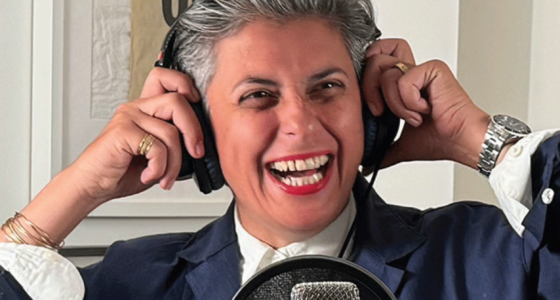As gigs become increasingly scarce, emerging and experienced journalists are carving out new pathways

[su_dropcap style=”simple” size=”10″]I[/su_dropcap] was willing to put up with a lot of bullshit,” says Phil Brown of his decade as a freelance film critic, “because I enjoyed the specific work I was doing so much.” The work seemed glamorous to outsiders. But his love for the subject matter and the special treatment he would get as a member of the press didn’t compare to being made to watch 30 movies in two weeks during the Toronto International Film Festival, or the 30,000–50,000 words he would have to write after that. During festival season he only slept about three hours per night, and earned just enough money to buy his family Christmas presents. “Other than that, I have nothing to show for it.”
Brown says he feels like he entered journalism “at the end of something.” And he’s not wrong. In 2008, the print industry was in a tailspin, but rising digital platforms, like celebrity culture blog Gawker, offered a ray of hope. Blogging presented a successful digital publishing model, but Brown notes that even the blogs that were successful didn’t have enough resources for payment or employment. Then came the economic recession, which caused an already deteriorating media industry to crumble even further. Stable jobs in newspapers and magazines became even more limited as brands competed for ad dollars with the Internet. While print contracted, freelancers and newcomers like Brown faced a larger barrier to entry and more difficulty in establishing themselves in the journalism industry than their peers from the pre-1980s golden era. This left them with limited pay or opportunity for growth. It also left them with a choice: to eke out a living as a journalist or start fresh with a new career in a more viable industry.
Brown joins a growing list of journalists making similar decisions and abandoning journalism altogether. A special report from the Columbia Journalism Review declared 2018 “The Burnout Year” for journalists. By-the-second updates of protests, executive orders, and press conferences are increasingly leaving reporters feeling “trapped in the news cycle.” The stress that comes with working in media coupled with meagre compensation and shrinking newsrooms is pushing journalists to seek out alternative careers. Many U.S.-based journalists are congregating in safe spaces like the Facebook group “What’s Your Plan B?” to pool their collective resources and share tips on transitioning out of the industry. In Canada, most journalists exiting the industry are moving to sectors that require similar skills. In May 2018, J-Source reported that while journalism jobs have declined, opportunities in public relations have surged; for every journalism job lost since 2011, 17 have been created in public relations and advertising. They wield their skills in similar industries, copywriting and marketing, in particular, or pivot into careers far outside of the communications bubble altogether.
Brown saw the industry decline happen right before his eyes. His prospects were sunny in 2007 when he graduated from film school at Queen’s University. There, he worked as the first resident film critic in years at the Queen’s Journal. A tip from an editor at the Journal led to an internship opportunity writing for the now-defunct Eye Weekly’s film and comedy section. Plenty of opportunities followed, including freelance work for horror magazine Rue Morgue and freelance stories for the Toronto Star and The Globe and Mail, until Brown had eventually written for “just about every publication in Toronto that published film stuff.” He even got fees for reprints and syndication.
When the 2008 recession set in, Brown had just started working for Metro Toronto. “A lot of these big companies took a lot of big financial hits,” he says. “They sort of used it as an excuse to start clearing house.” Editors began wanting shorter copy and after November 2008, Brown says rates were cut at least once a year. Metro put a stop to syndication payments in response to the contracting economy, he says. Brown was let go by Metro. The impact of the financial meltdown and the shift in the traditional revenue model affected the production of journalism across the industry. Since then, a majority of the closures in Canada have been community newspapers. In November 2019, Torstar Corporation, the publisher of the Star, closed regional papers in five of Canada’s major cities, including Toronto, Vancouver, and Edmonton. According to a report released by the Public Policy Forum, 169 local Canadian news outlets either merged or closed between 2008 and 2016. But there have also been mass layoffs at legacy media organizations, diminishing the size and potential of their work, as well the availability of freelance work. In November 2015, Bell Media, owner of regional news outlets all over Canada, laid off 350 people. And online-native outlets like BuzzFeed, which outgrew its early blog form and became a juggernaut of digital media, have also had to downsize. Canadian journalist employment numbers dropped by seven percent between 2001 and 2016. Journalists are now seen as workers in a precarious industry, with many operating as freelancers in a gig economy.
In 2018, Brown decided enough was enough. He had lived below the poverty line for the majority of the past 10 years and the constant need to pitch and find new ways to keep his head above water was no longer worth the passion he invested into his work. So he ditched journalism for copywriting. Now Brown no longer faces weekends where a loaf of Wonder Bread and a jar of peanut butter constitute three days of meals. His pay and job stability improved even if his sense of fulfillment took a hit. Because he was used to cranking out content at an alarming rate just to stay afloat, the workload in copywriting feels like a “cakewalk” compared to journalism.
[su_dropcap style=”simple” size=”10″]W[/su_dropcap]hen Caro Rolando began the Master of Journalism program at Ryerson University in 2010, a career in journalism was touted to her as one filled with stress. Moreover, her professors readily accepted that “martyrdom.” She would have to forego a personal life, in exchange for a successful journalism career. Eventually, for her, the idea of giving up her work/life balance for the industry lost its allure. Her early years in journalism were exciting. As a media fellow for the Aga Khan Foundation Canada based in Nairobi, Kenya, she worked with Nation Media Group, a publishing house with additional papers in Uganda and Tanzania. She developed a portfolio of work, relishing the challenge of finding sources and writing stories. But Rolando couldn’t translate her international experience and commitment to journalism into a full-time job in the precarious pool of Canadian media. After a year as a casual for CBC’s Cross Country Checkup, she needed something more financially stable. Still working casually for Cross Country Checkup, she found full-time work as a communications assistant at York University. The job, she says, had a completely different pace. “I could do it in my sleep.” Still, the drive toward journalism seems like an innate pull rather than a simple vocational choice: in March 2020, Rolando gave up her job at York when she started a full-time job as an associate producer at The Current. Rolando says she “missed journalism too much.”
[su_quote]Because he was used to cranking out content at an alarming rate just to stay afloat, the workload in copy-writing feels like a “cakewalk” compared to journalism [/su_quote]
In 2004, Sophie Nadeau also made the switch into media relations. Once a TV producer, she was feeling burnt out. “I needed to make a decision that pointed me in a healthier direction,” she says. She is now the national media lead at Edelman Canada, a communications firm where she acts as a liaison between clients and journalists and trains people on interacting with the media. At the time she made the shift, her colleagues noted that she was going to the “dark side.” But Nadeau didn’t think so. Her newsroom, centered on a lifestyle program, lost its sacrosanctity, and began to focus, in her opinion, heavily on ratings and advertising rather than the quality of the reporting. “I could see the edges of news production fraying,” says Nadeau. She was instructed to put more golfing segments on-air, not because it held any news value, but because it got attention. “The extra pressure now, trying to chase the audience, is a lot for reporters,” says Nadeau.
Other challenges in newsroom practice—whom to hire, what stories to pursue, and how to frame them—have made many journalists feel that their voices and their experiences don’t have value. For Septembre Anderson, that frustration began while she was in journalism school at Humber College. She recalls a professor who praised her writing but offered advice that mirrored problems in the industry. When she wrote about racial diversity in the fashion industry, for instance, she was told: “‘If you keep talking and writing about race, you’re never gonna get hired in this industry.’” Anderson pauses when telling this story, and then adds, “So [the professor] was right.”
The problem to which Anderson alludes is a systemic one that may account for some journalists, like her, transitioning out of the media industry. The vast majority of people who make up Canada’s current media force are white. In 2016, Canadaland reported that between 2011 and 2016, less than 10 percent of the staff at CBC, Canada’s national broadcaster, were visible minorities, despite approximately one-in-five people in Canada identifying as visible minorities in the 2011 census. Research shows that many newsrooms in Canada resist self-reporting demographic information, which analysts believe reflects the industry’s reluctance to address the issue.
Navigating the media industry as a racialized journalist was never discussed when Rolando was getting her degree. But she is seeing a shift now, especially as a member of Canadian Journalists of Colour (CJOC), which runs a Facebook group dedicated to building a network of racialized journalists in Canada. Anita Li says despite her co-founder Sadiya Ansari and herself already having developed the idea in mind, the resolve to actually start it came after former Globe journalist Sunny Dhillon, then working from their Vancouver-based office, quit his job and penned a Medium piece titled, “Journalism while brown and when to walk away.” In his Medium note, Dhillon asked some key questions: “To be a journalist of colour can be to walk a tightrope. On which issues do you weigh in? On which issues do you not? What do you pretend you didn’t see or hear? When that isn’t possible to what do you cowardly chuckle along?” The reactions to Dhillon’s post and the conversations it generated became a galvanizing force for CJOC. Li sensed an opportunity for a deeper conversation about the issue of inclusion in Canadian journalism. Within months of launching, members from across Canada took the initiative to establish their own chapters. Today, CJOC has chapters across several Canadian cities: Toronto, Montreal, Vancouver, and Edmonton. Chapters have even sprung up in journalism schools and post-secondary campuses as well (Ryerson University established its own collective in 2019).
Li’s efforts may help to rein in some of the Plan B movement. Her observations are partly based on her lived experiences while working for Canadian broadcast outlets and newspapers early in her career. “There are unique barriers that journalists of colour face in media.” Li cites Trudeau’s brownface and Don Cherry’s “you people” statement as speaking to the necessity of involving racialized voices in newsgathering. “I feel like Canadian journalists of colour should be at the forefront of this, because these are things we deal with in our real lives.”
[su_dropcap style=”simple” size=”10″]F[/su_dropcap]or Anderson the decision to leave journalism meant spinning her career out of the communications-media sphere altogether. She now works as a front-end web developer. She’d been playing with coding for many years, in high school classes, and tweaking HTML, and when she finally decided to cut the journalism cord, she took a gradual approach, taking classes in website building and crowdfunding half of her tuition to get her certification. Anderson doesn’t miss being a journalist. In 2015, when the Ontario Public Service Employees Union, one of the largest unions in the province, tapped her as a speaker on a panel covering critical issues in feminism (she had been writing critically as a freelancer for National Post, Flare and the Globe), she created a personal website for her newfound exposure. She fell in love with the world of web development. That experience opened a door in her career imagination. Anderson realized it was time to pivot, time to put her journalism career behind her.
But the transition wasn’t as easy for Nadeau. “I cried when it happened a lot, because I feel like a journalist in my soul and so the idea of not doing it anymore was just heartbreaking.” But there were some tangible benefits. She no longer had to chase down experts for live segments or desperately search for replacements when they dropped out minutes before the show went to air. “It starts to break your body down…If I’m being honest, TV production was probably the most stressful job I’ve had in 25 years.” And yet, she confesses she was also fulfilled by it. “Is that weird to be so stressed out by something but then also miss it?”
That adrenaline rush is a feeling Theola DeBose knows all too well. As a former foreign correspondent for the Washington Post, she was feeling burnt out when she returned from a 2003 assignment in Iraq. “When you’re in a war zone it’s life and death, you’re working all the time, it’s exciting,” she recalls. “But I remember being so exhausted, and I thought about who do I have to talk to?” DeBose felt accomplished but alone. She realized that she didn’t want that career anymore, yet she pushed on until 2012. But what could come next? The self-described “quintessential reporter,” willing to work 14-hour days, walked away from the newsroom and refocused.
In 2017, she founded JSkills: Life After Journalism, a course helping journalists settle into new careers. She often meets with journalists going through what she went through. “There’s so much talent now being wasted because journalists are losing jobs,” says DeBose. “Where is that talent going?” Journalists can find their feet in numerous other industries, says DeBose. Their experience in frenetic newsrooms is a true asset when hunting for other jobs. In the tech industry, for instance, interviewing skills help to develop outputs like user-experience reports. “Journalists can do that because they can talk to people about what they’re doing, how they’re doing and then how they’re experiencing that.”
[su_dropcap style=”simple” size=”5″]T[/su_dropcap]here is room for opportunity and new media in Canadian journalism. Li says a lack of outlets to pitch and publish should, in theory, spur on young journalists (those who have the financial means, at least) to create their own digital-first publications and join Canada’s rapidly-growing digital media ecosystem. There are community publications like The Tyee and recent startups like The Discourse, The Logic, and The Athletic, focused on media, technology, and sports respectively. None of them use the advertising model that has come to define traditional media. Instead, they use alternatives: crowdfunding, subscriptions, events, and community partnerships. “It’s kind of encouraging more entrepreneurship in journalism, in journalists. So what we’re finding is that more and more journalists who work on the editorial side are kind of biting the bullet and saying, ‘Hey, let’s try to start our own publication,’” says Li. “Basically, you’re creating more jobs for journalists, and you’re creating opportunities that are not the standard legacy publication opportunities.”
[su_quote]I cried when it happened a lot, because I feel like a journalist in my soul and so the idea of not doing it anymore was just heartbreaking [/su_quote]
As the well of standard journalism jobs dries up, students are beginning to sell their journalism skills in alternative markets. Dylan Freeman-Grist moonlighted in business development as he wrapped up his Bachelor of Journalism degree at Ryerson University. He volunteered for student groups, managing outreach to partners and sponsors. “I started falling in love with [it] and I found it used a lot of my journalism skills.”
He experienced, firsthand, the precarity of working in media when his freelance contract with the Toronto Standard was cut short because management stopped its operations. A notice on the site reads “this is not goodbye,” but it sort of was because the outlet hasn’t published since 2015. The following year he did a stint at Village. He was only there for a month before the publication folded, and he became a freelancer-for-hire once again. His third attempt to find footing in the industry, a little over two years at a part-time job doing data entry at theScore, was eventually automated out of existence. “I was devastated at the time,” says Freeman-Grist. Having been laid off three times before even graduating, he was culturally burnt out of the industry. He witnessed his friends competing for the few journalism jobs that were available, only to be laid off within a year. He decided he wouldn’t be one of them.
“A business development role…kind of presented itself and I just took it.” The transition was easy, since Freeman-Grist had never worked as a full-time journalist. “I didn’t have this sort of gut punch of like being a staffer for the Toronto Star and having to figure it out after [being laid off].” He worked at the Documentary Organization of Canada, a non-profit representing documentary filmmakers. This “journalism-adjacent” position allowed him to feel like he was still in the industry. “A lot of documentary filmmakers come from journalism backgrounds. And a lot of what I was doing was figuring out ways of supporting them. I think that was the key, I was supporting as opposed to actually doing.”
He also wasn’t interested in working for legacy media. “The business models don’t make sense. The way they treat their employees, and particularly their journalists, does not make sense,” says Freeman-Grist. “I just don’t see long term viability in any of these and I just don’t want to be a cog in this machine.” Despite having a day job in another industry, Freeman-Grist is still attempting to work in journalism. In 2020, he launched a digital publication, The Town, covering film in Toronto. There’s no telling if his own entity will deviate from the practices legacy media has established. Right now, Freeman-Grist says he’s more concerned with building an audience than worrying about revenue.
As traditional models of journalism become unfeasible, emerging, mid-career, and senior journalists must deal with existential questions about the viability of their profession. Some, like Freeman-Grist, will avoid the beaten path, hopeful of laying down a new one. But for many journalists the industry doesn’t offer much hope right now. Financial pressures edge up against the challenge of inclusion within the industry (despite an increasingly diverse Canadian demographic). Those two factors collide to make journalism a difficult Plan A to pursue. Stretched, exhausted, and undervalued, journalists are choosing to find success elsewhere.
“I feel more appreciated as a web developer,” says Anderson. “I definitely am better paid.” In addition to benefits, she no longer goes out with a notebook and pen, in case of a spontaneous interview: “I’m learning how to be a civilian.”





